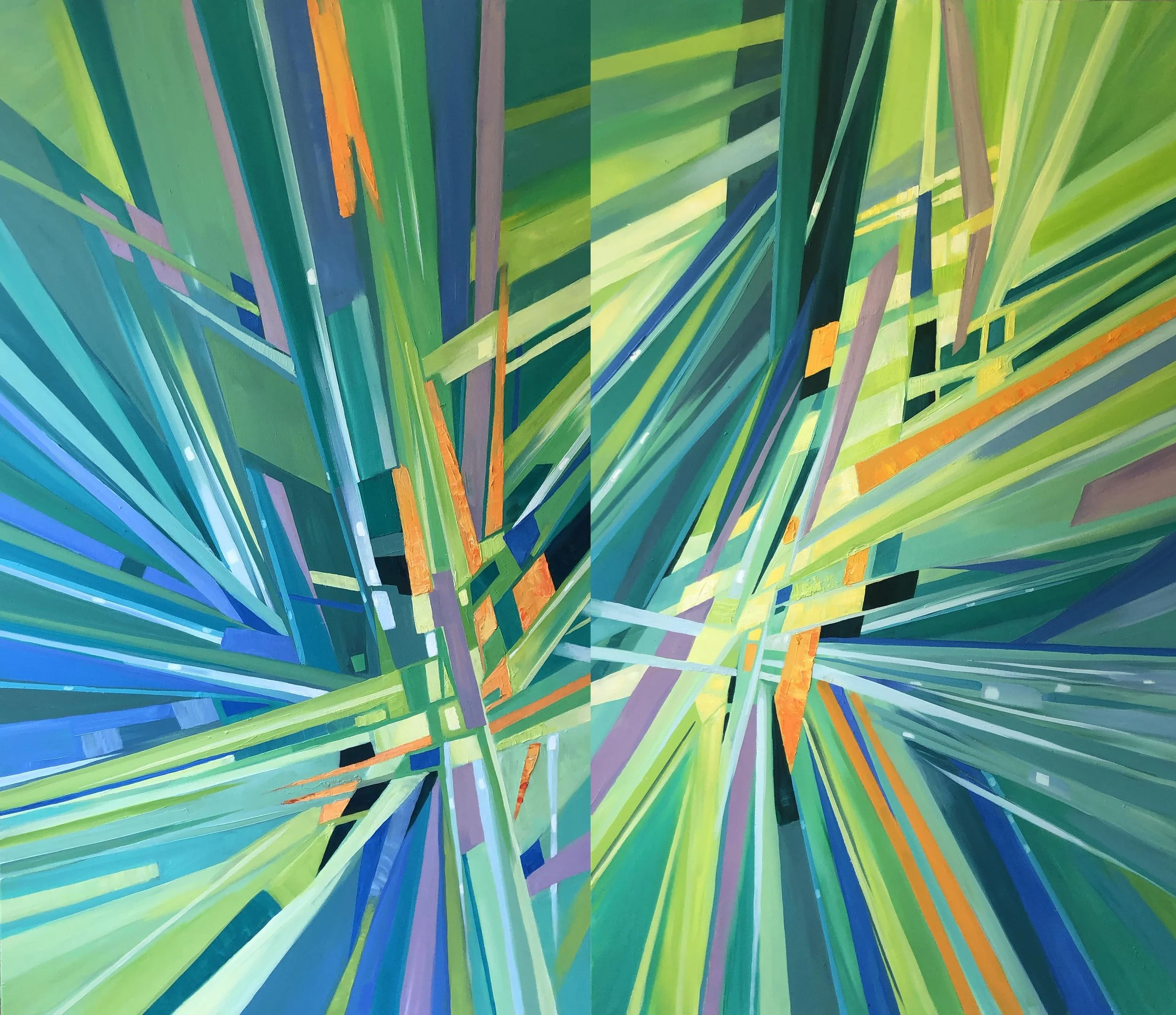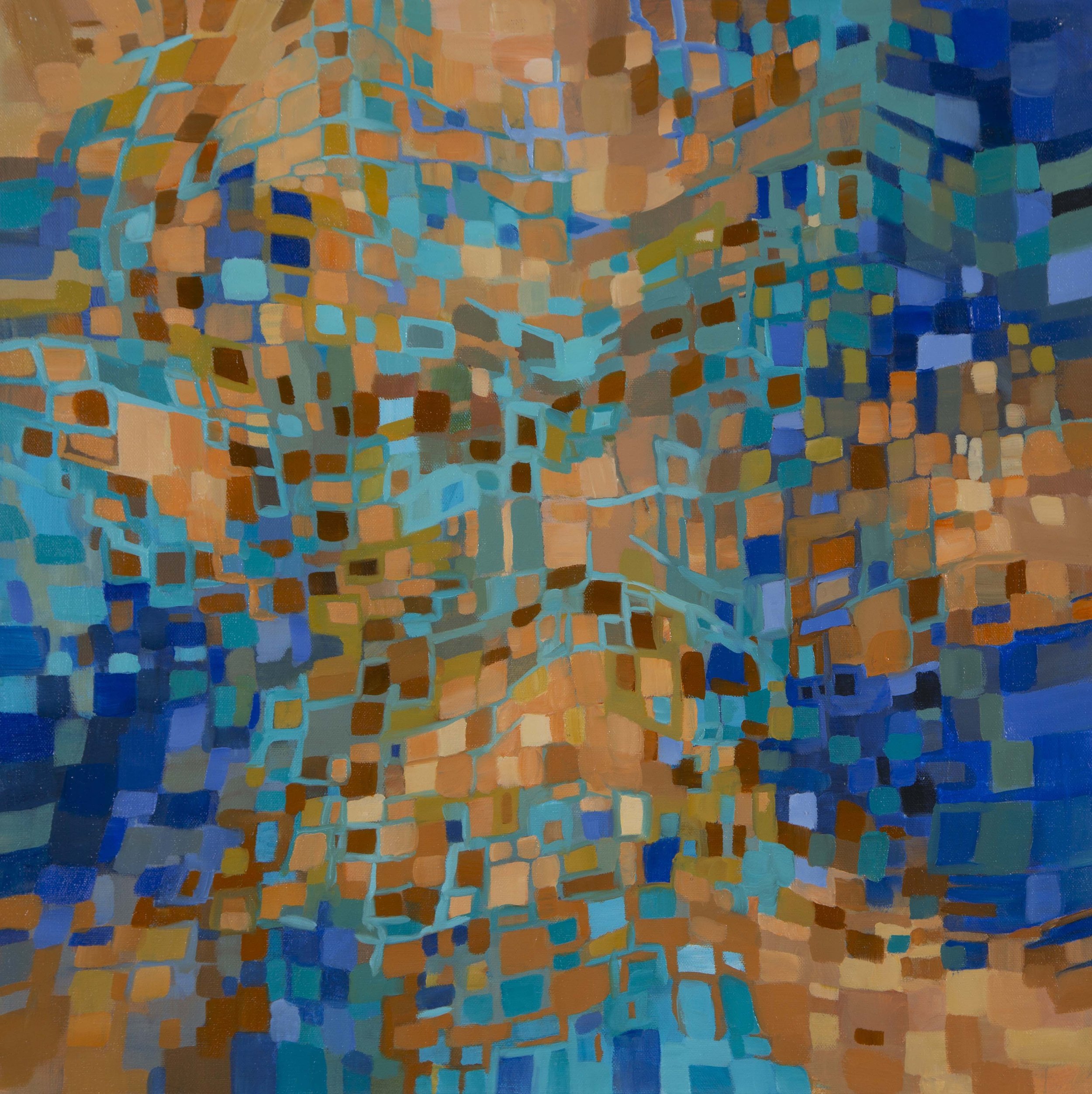Dynamic Abstraction Manifesto
By Anna Miller, 2015
Dynamic Abstraction
Dynamic abstraction is an exploration of how depth, space, and movement can be created within the boundaries of a flat, two-dimensional work of art. Through the interplay of layered color, shifting value, directional lines, and rhythmic mark-making, the surface becomes an active field rather than a static plane. Forms seem to expand, dissolve, or vibrate as if caught in continuous motion, inviting the viewer to experience spatial fluidity without traditional perspective. This approach embraces ambiguity and visual tension, allowing subtle transitions and bold contrasts to generate a sensation of weightlessness or kinetic energy.
In many ways, dynamic abstraction mirrors the superficial world each of us presents on a surface—seemingly simple and contained—while contrasting sharply with the rich inner world and profound depth of human consciousness that lies beneath. A painting becomes a visual representation of that inner depth, translating intangible emotion and awareness into a living, visible form.
I first coined the term dynamic abstraction in 2015, born from moments of frustration with the inherent limitations of working on a two-dimensional surface. It became my challenge to the status quo of traditional painting: a refusal to accept flatness as a barrier, and an insistence on expanding the perceptual and emotional possibilities that a canvas can hold. The concept calls for a rethinking of what abstraction can do—how it can open space, suggest movement, and generate an experience of depth that transcends the physical constraints of the medium.
Dynamic abstraction carries a vision for the future of painting—one where emotional resonance, psychological space, and perceptual complexity hold as much value as recognizable imagery. It imagines a world where viewers engage art not as decoration, but as an invitation to look deeper, question surface appearances, and reconnect with their own internal landscapes.
This philosophy offers an actionable direction: to slow down, to look longer, and to train ourselves to perceive nuance—both on the canvas and within ourselves. It encourages artists to build layered worlds that push against convention, and it challenges viewers to participate in the creation of meaning through their own perception. Small, deliberate shifts—in color, in line, in attention—become measurable steps toward a richer visual and emotional experience.
Dynamic abstraction speaks through emotional and engaging language because the work itself demands it. Metaphor, rhythm, and resonance are intrinsic to the process; they are how depth becomes visible. The clarity and structure of the idea remain simple: create movement where none exists, create space where none is given, create depth where only surface is allowed.
Above all, dynamic abstraction is rooted in authenticity. It comes from lived experience, from years of representational training, from the discipline of observation, and from a personal desire to break the confines of the expected. My argument for this approach is grounded in the reality of my studio practice, my academic foundation, and my belief in art as a tool for inner transformation.
Call to Action
Look beyond the surface. Question what appears flat. Create space in your seeing. Allow depth to arise where it is not offered. Let the painting—and yourself—expand.

